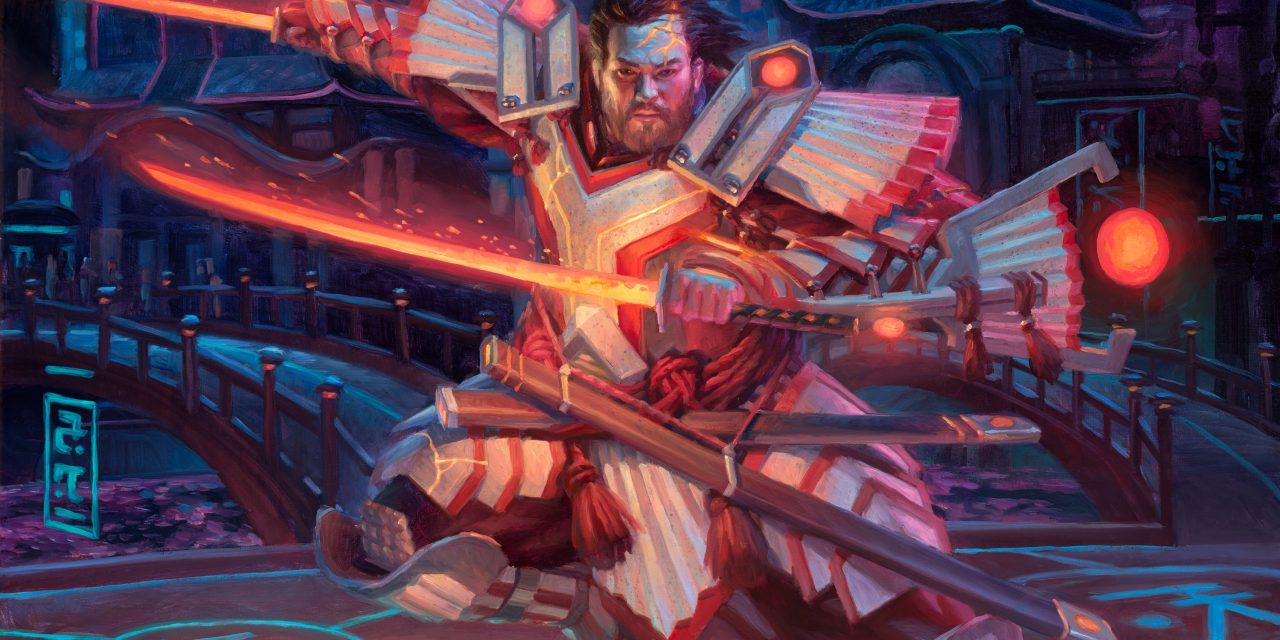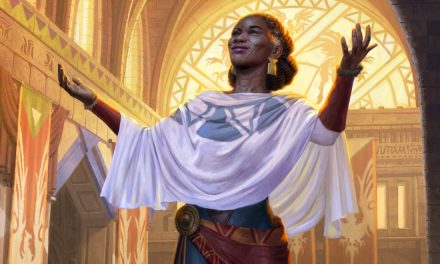The Samurai Fighter and their opponent stare each other down as the tension builds.
With a single, fluid motion, the Samurai unsheathes their blade and lunges forward with a single, precise strike. Their opponent falls to the ground as cherry blossoms blow away softly in the breeze…
Returning their blade to its sheath, the warrior takes a moment to honor the deceased before continuing on their journey.
Does it get any cooler than the samurai? I don’t think so!
Do you have the resolve to train your mind, body, and spirit in this ancient warrior tradition?
Then read on with this full guide to the Samurai Fighter in D&D 5e!
What is the Samurai Fighter in D&D 5e?
The Samurai Fighter has no doubt worked hard to develop their impressive and deadly technique in combat.
But the true power of these warriors goes beyond technique and training!
More than anything, the Samurai works tirelessly to develop their own spirit. Through meditation and a strict code of honor combined with their martial prowess, these warriors can seem virtually unstoppable.
With unwavering resolve in the face of adversity, the Samurai does not yield. Enemies are left with the option of either surrendering or falling where they stand.
To walk the path of the Samurai requires full dedication and discipline. Becoming one with their weapon of choice, the Samurai and their willpower are unbreakable.
The Samurai Fighter appears in Xanathar’s Guide to Everything alongside the Arcane Archer and Cavalier subclasses.
Role in the Party
The Samurai Fighter is heavily focused on combat and putting out as much damage as possible.
Depending on how you want to build your Samurai, they make for formidable warriors in both melee and ranged combat.
If you’re going with a Ranged build, the Longbow is the ideal choice. You’ll want to pick up the Ranged Combat fighting style as well.
If you’re focusing on a melee build, keep in mind that your bonus action will be very important for your most important features.
Using two-handed weapons is an excellent way to maximize your damage output, though you can also take a more balanced approach with the classic “sword-and-board”.
Whatever you choose, the Samurai is built for the battlefield.
However, Samurai Fighters do get a handy feature that gives them some ability to function as a Face for the party. While they’re skilled and powerful warriors, they aren’t bloodthirsty brutes!
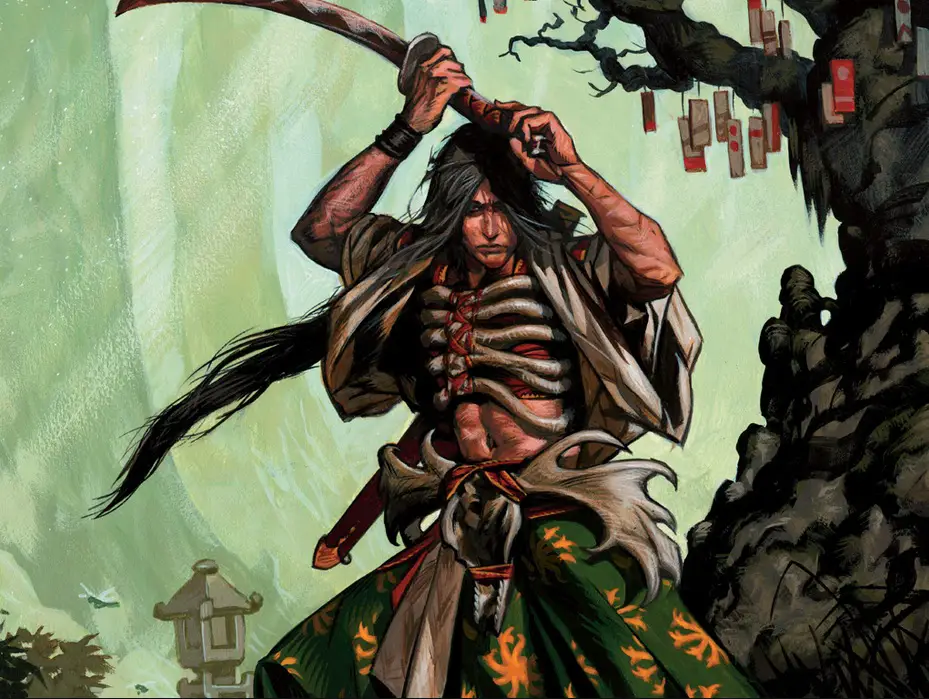
Samurai Fighter Features 5e
As always, keep a sharp focus on your action economy when building your Samurai Fighter.
Your bonus action will be in high demand, so it’s harder to base your character’s build around two-weapon fighting.
However, using two-handed weapons (with the Great Weapon Master feat, of course) gets seriously awesome.
With that said, let’s dive into this subclass’s features!
Bonus Proficiency (Level 3)
Getting free proficiencies is always nice.
You gain proficiency in one of the following skills of your choice: History, Insight, Performance, or Persuasion.
Alternatively, you learn one language of your choice.
Insight or Persuasion are the best picks.
History is better handled by a Wizard or someone else that’s focused on Intelligence. Similarly, Performance isn’t spectacularly useful compared to your other options.
Personally, I’m fond of the Insight skill. Whether you’re using it to tell if NPCs are lying, get a general “vibe check” on a situation, or any other “gut feeling” kind of matter, it’s both handy and underrated.
Related: Using the Insight Skill in 5e
However, your level 7 feature will give you an extra bonus to using the Persuasion skill. If you plan on acting as the party’s persuasive Face, taking proficiency with Persuasion with this feature would be better.
Honestly, it’s not a bad idea to pick a background that gets you proficiency with either Insight or Persuasion. From there, get the other one with this bonus proficiency feature!
Whatever skill you pick, getting an extra skill proficiency is much more valuable than getting an extra language. (If another language is necessary, there are several spells that can help you deal with the language barrier.)
Fighting Spirit (Level 3)
Most importantly, at level 3 you’ll also be getting your most important feature for the Samurai Fighter.
You know how good it feels when you get to make an attack roll with advantage?
Yeah…
You’ll be getting that feeling… A lot!
As a bonus action on your turn, you can give yourself advantage on weapon attack rolls until the end of the current turn.
When you do so, you also gain 5 temporary hit points. The number of temporary hit points increases when you reach certain levels in this class, increasing to 10 at level 10 and 15 at level 15.
You can use this feature three times, and you regain all expended uses of it when you finish a long rest.
Holy cannoli this is great!
First things first, a reliable way to give yourself advantage on your weapon attack rolls until the end of your turn is no small thing.
Especially as you level up and start being able to make 3-4 attacks (all at advantage) per turn!
And just as an extra “cherry on top”, you’re also gaining temporary hit points! This makes you even more durable as you slash your way through the enemy ranks.
To get the most out of this feature, make sure to not forget that temporary hit points don’t stack.
Unless you absolutely need to, consider not using this again until you’ve burned through your existing temporary hit points.
Additionally, this pairs incredibly very well with feats like Great Weapon Master or Sharpshooter.
Sure, you’re taking a penalty to your attack roll with the hopes of dealing a ton of extra damage. But advantage is an excellent way to get around that penalty and bring the pain!
Lastly, make sure to ration your uses of this out. You’ve got three a day (for now!)
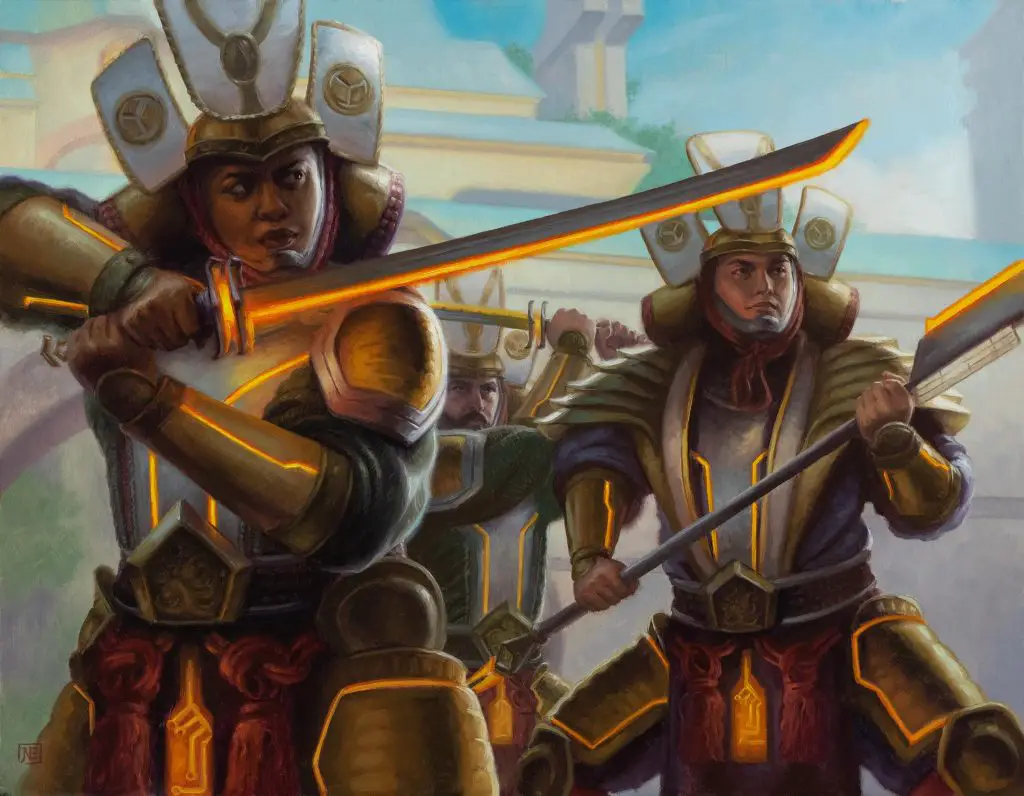
Elegant Courtier (Level 7)
While the Samurai Fighter is certainly a skilled warrior, they balance that might with grace and self-control.
When speaking with others, that same grace allows them to work well as a persuasive Face for the party.
Whenever you make a Charisma (Persuasion) check, you gain a bonus to the check equal to your Wisdom modifier.
Your self-control also causes you to gain proficiency in Wisdom saving throws. If you already have this proficiency, you instead gain proficiency in Intelligence or Charisma saving throws (your choice.)
Fighters aren’t typically known for being the more charismatic types, but the Samurai does this well.
Naturally, this feature gets even better if you’ve invested more into your Wisdom score. Both your Persuasion checks and your Wisdom saves will get a nice buff!
Speaking of which…
Gaining proficiency in Wisdom saving throws is a pretty big deal. Spells and effects that prompt Wisdom saves can be absolutely devastating (especially in the mid-to-high levels).
Not least of all are spells like Dominate Person which can result in you being turned against your own team!
Such a situation could very quickly result in you cutting down your own allies while burning uses of your Fighting Spirit feature!
If you’ve already gained proficiency in Wisdom saves from some source, Charisma becomes your next best choice. (There aren’t many spells/effects that will prompt you for Intelligence saves.)
Recommended: Mastering the Fighter’s Action Surge in D&D 5e
Tireless Spirit (Level 10)
Fighting Spirit is vital to how the Samurai Fighter functions. However, it can be tricky to ration out your three uses of the feature over the course of the entire adventuring day.
If you use all of them early, what happens if you end up with a really big encounter and need it but don’t have any uses left?!
But on the other hand…
What if you get so worried about waiting for “the perfect opportunity” that you end up rarely (or never) using such an awesome feature?!
Worry no more, dear Samurai!
When you roll initiative and have no uses of Fighting Spirit remaining, you regain one use.
With Tireless Spirit, you’ll always be able to get at least one use of Fighting Spirit in for each fight.
For those moments when your attacks HAVE to hit (or you want to get around disadvantage), this is excellent to have ready.
Used cleverly at the start of combat, you can reliably remove enemies from the encounter before they even get a chance to act!
How’s that for an opening round?!
Rapid Strike (Level 15)
Having advantage on your attacks is great. With incredible precision, it almost guarantees that your attacks will hit.
But sometimes you just need to put out as much damage as possible.
That’s where Rapid Strike comes in.
If you take the Attack action on your turn and have advantage on an attack roll against one of the targets, you can forgo the advantage for that roll to make an additional weapon attack against that target, as part of the same action.
You can do so no more than once per turn.
Even only being able to use this once per turn has a huge impact on your damage output.
I mean, you’re getting 4 attacks on your turn now and 5 once you hit level 20. Of course, things like your Action Surge feature and the Haste spell increase this even further!
Of course, this feature does rely on you having advantage in the first place. Though that’s not terribly difficult for the Samurai Fighter to achieve.
The most direct way for the Samurai to gain advantage is with their Fighting Spirit feature. Thanks to the Tireless Spirit feature, you’ll have at least one use of it per combat encounter.
But don’t ignore the other ways you can gain advantage!
A caster using a spell like Faerie Fire can give you advantage on attacks against multiple enemies. You can also shove enemies and knock them prone to gain advantage.
Perhaps your party’s Monk has stunned an enemy with their Stunning Strike feature or one of your spellcasters has cast Hold Person on an enemy.
Maybe you’re working together with a Mastermind Rogue as yet another way of consistently getting advantage in combat.
Rapid Strike is a vicious feature that you will be able to get a TON of use out of. Just make sure to coordinate your party’s tactics to reliably gain advantage!
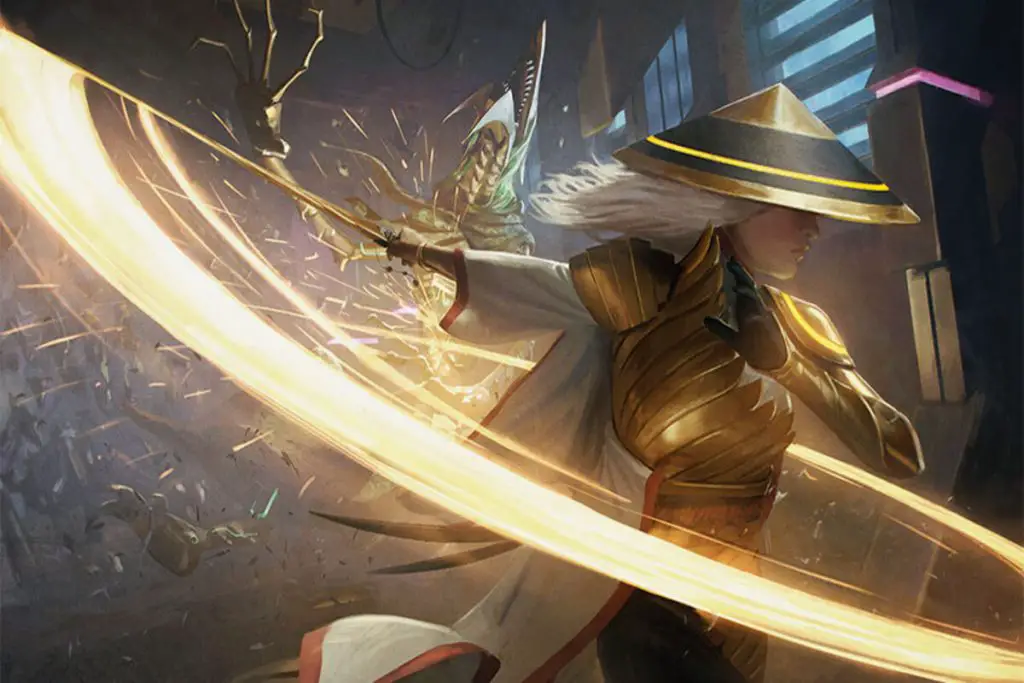
Strength Before Death (Level 18)
Though at last, we come to the Samurai Fighter’s capstone feature: Strength Before Death.
This is a seriously cool feature that also brings a huge amount of drama and cinematic appeal to the table. It captures that sense of a warrior who refuses to surrender when faced with death.
Instead, they choose to fight to the very end and potentially snagging victory from the jaws of defeat.
If you take damage that reduces you to 0 hit points and doesn’t kill you outright, you can use your reaction to delay falling unconscious, and you can immediately take an extra turn, interrupting the current turn.
While you have 0 hit points during that extra turn, taking damage causes death saving throw failures as normal, and three death saving throw failures can still kill you.
When the extra turn ends, you fall unconscious if you still have 0 hit points.
Once you use this feature, you can’t use it again until you finish a long rest.
Not only are you getting AN ENTIRE EXTRA TURN, but it interrupts whatever else is currently happening.
And with all that you’re capable of at this point, you can make this extra turn incredibly impactful. If you’re clever, it can turn a potential TPK into a victory!
Related: Dropping to Zero Hit Points in D&D 5e
Using Strength Before Death
You’ve got a bit of a choice for how you want to use the Strength Before Death Feature. Personally, I favor the all-out attack approach.
(Remember: at these higher levels, death is usually more of an inconvenience than “the end.” Your party should almost certainly have a way of bringing you back unless it’s a TPK.)
First things first, this is the time to activate every feature you’ve got. You’ll either go out in a blaze of glory or save the day. (Or both?)
If you’ve got a use of Fighting Spirit, activate it and give yourself advantage. In most cases, you may as well use Rapid Strike as well which means you’re getting three attacks at advantage and two normal attacks.
Then, use your Action Surge if you’ve still got it. That’s going to give you yet another Attack action with which you can make four more attacks (again, at advantage from Fighting Spirit).
Though maybe you prefer to play it a bit safer instead of going on an all-out attack.
In that case, you could use your bonus action for your Second Wind feature instead of the Samurai’s Fighting Spirit.
This will give you an opportunity to recover some hit points and possibly fall back after your attacks (or at least possibly buy you and your healer some more time.)
You’ll still need healing pretty quickly, but at least you’re still alive.
(Just note that Strength Before Death works once per long rest. If you get knocked back down to zero hit points, you’ll be unconscious this time.)
Connections
The Samurai Fighter does a great job at capturing the more cinematic portrayals of samurai from the real world.
You can find a ton of inspiration for how such characters connect to storylines in movies, comics, and classic folk tales.
The films of Akira Kurosawa are definitely a huge influence here (Seven Samurai and Yojimbo are absolute classics!)
Though you might also get ideas from the legend of the real-life samurai Miyamoto Musashi or popular comics/shows like Rurouni Kenshin or Samurai Champloo.
Wherever you pull inspiration from, the path of the Samurai Fighter is one that rewards balance.
While they are legendary warriors on the battlefield, they also aim for balance by adhering strictly to a code of honor. In this way, they develop their body alongside their mind and spirit.
After all, it’s that spirit and force of will that they develop within themselves that fuels their incredible power!
So, ask yourself a few key questions when making a Samurai:
- What kind of code do they live by?
- How do they train and develop their mind and spirit alongside their body?
- Why are they adventuring? (For a lord? For justice? Some deeper meaning or personal quest?)
There are countless ways to make this classic and much-loved archetype your own!
If you want to instead incorporate more historical accuracy into your Samurai Fighter, I actually have a friend who can help you out.
He is very knowledgeable about Japanese history and has a ton of videos that can give you a more realistic take on who, what, and how the samurai actually were.
I’ll include one of his videos below that you might find interesting.
Is the Samurai Fighter Good?
The Samurai Fighter is an excellent subclass that you should absolutely consider playing in your next 5e game.
Every feature captures the exact feeling that I would want in such a character. It feels cinematic and engaging while also being consistently useful.
I’m personally much more partial to a melee build with this subclass. However, their features are also incredibly useful if you prefer ranged combat instead!
For those who enjoy combat-heavy games and want to focus their energy on playing offense, the Samurai Fighter is a great choice.
However, be aware that this is a subclass that is very focused on itself. (Though that’s not necessarily a bad thing!)
While you can offer some support for the party as a Face in situations requiring a persuasive approach, all your other features are meant strictly to increase your own performance in combat.
But, hey, sometimes you just need to let your sword do the talking!
Recommended: Ranking EVERY Fighter Subclass in D&D 5e!
Conclusion – Samurai Fighter in D&D 5e
Considering how much of D&D (and the fantasy genre in general) is inspired by European legends and folklore, it’s great to see something like the Samurai brought into the game in a way that still feels grounded and exciting without being too… kitschy, might be the best word, I suppose.
As a big film geek, I especially like how much it captures the feeling created by the classic Kurosawa films I mentioned!
Between the portrayals of different samurai in pop culture as well as those from real-world history, you’ve got no shortage of inspiration for building such a character.
Do you have a character concept for your own Samurai Fighter? I’d love to read about it in the comments!

